We understand how challenging it is to find the right debt relief solution, but our team of CreditLift debt experts is here to guide you through the
process. Before we dive into the options available, we want to caution you about websites and agencies that advertise government debt relief
programs. The only Canadian government debt relief program is a consumer proposal, which is a legal debt settlement program available under the
Bankruptcy and Insolvency Act. It’s a reliable debt relief program that helps you avoid bankruptcy while providing the same creditor protection. A
licensed insolvency trustee who is also a neutral party, is the only professional who can file a consumer proposal. However, you have the right to
exclusive advocacy care and representation for what’s in your best interest, not your creditors before filing with a trustee. We are not a Licensed Insolvency Trustee.
At Creditlift, we understand that each person’s financial situation is unique, and there’s no one-size-fits-all debt relief program. Thankfully, there are
various options available that can help you get out of debt. Each program has its pros and risks, and we recommend talking to our team of experts
who’ll exclusively advocate and represent what’s best for you, not your creditors.
This option involves getting a new loan to pay off multiple small loans, and the payment is spread out over a more extended period. It can be a good credit card debt solution as it makes debt repayment automatic and more affordable, but it does not eliminate your debt.
A non-profit credit counsellor can summarize your debts and prepare a multi-year repayment plan for you. They offer a solution called a debt management plan (DMP), which allows you to pay back your debts over three to five years. It’s not a form of debt cancellation or debt reduction, but the interest relief you get might be enough to solve your debt problems. Not all creditors will participate, however so keep that in mind that not all your debts will be resolved through this program.
This option involves making an informal arrangement with your creditors to pay back a portion of your debt. It’s not guaranteed, and fees are required to complete the process. If you have a lump sum of money available, you can try to negotiate a settlement with your creditors on your own. Again, not all creditors will participate so keep that in mind that not all your debts will be resolved through this program.
A legally binding settlement between you and your creditors to pay back a portion of your debts
over a period of up to five years. At the end of the proposal period, your debts are forgiven
(technically discharged), and you can begin to rebuild your credit score. It’s often the safest and
cheapest debt relief option when dealing with debt. Consumers proposals are administered by a
Licensed Insolvency Trustee. Credit Lift is not a Licensed Insolvency Trustee.
Considered the last resort option when dealing with debt, bankruptcy offers protection from
creditors and a discharge of all debts at the end of the bankruptcy term. Bankruptcies are
administered by a Licensed Insolvency Trustee. Credit Lift is not a Licensed Insolvency Trustee.
You may have a debt problem if you’re avoiding calls or opening letters from your creditors, spending more money than you have coming in, using
credit cards as a necessity, borrowing money to make it from one payday to the next, or if creditors are threatening to garnish your wages, sue you,
or repossess your car or furniture. If this is impacting your emotional, mental, physical and spiritual health and wellness, please don’t delay, it’s time
to give us a call and discuss your debt relief options so you can be the best version of yourself.
Don’t let your debt problems weigh you down; contact us today, and let’s find the best debt relief solution for you!
Debt consolidation can help you achieve paying off your debts by taking multiple debts or payments and combining them into one easy payment. Fewer payments each month not only brings relief, but also savings if your debt is consolidated at a lower interest rate. If you’re unsure if borrowing more money to pay off what you owe is the right solution, or if there’s other alternatives that don’t require borrowing more money, don’t worry, we’ve got you covered. Let us share about the various options for debt consolidation and the services available in Canada and together we can have the perfect solution for you.
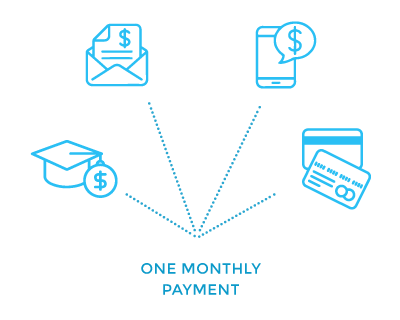
Consolidation can effectively simplify your finances. But you need to be very
disciplined. Keeping track of multiple debts from multiple creditors with varying
interest rates, repayment schedules, and other conditions can make you feel out
of control and overwhelmed if you’re not regularly checking in on your finances.
When you consolidate your debts or payments, you’ll only have one payment to
keep track of. If some or all of the debts you’re carrying have high interest rates,
then consolidating them with a lower interest rate will also save you money. All
consolidation options work this way, but they work in different ways.
A debt consolidation loan allows you to borrow money to pay off your other debts. The money from the new loan pays off your other debts, and then you only make payments on this one new loan. With a lower interest rate, a debt consolidation loan can be an attractive and effective option but you must be disciplined, diligent to avoid going further into debt. Since each lender is different getting approved can be more difficult if you’re behind on your payments. It could also put assets like your home at risk if you use them as collateral. Be careful not to double your debt by not living within your budget while you’re paying off the loan.
Advantages:
Disadvantages:
Credit cards often offer attractive promotions, but there are strict terms and conditions when it comes to consolidating debt. Credit card debts can be paid off with a new credit card, but it often doesn’t work out as planned. Even if the new card has a low interest rate to consolidate other debt, that low rate often won’t apply to any new purchases you make. Also, if you haven’t paid off the balance transfer amount by the time the promotional rate expires, you will be responsible for the high interest payments. So, if you’re going to use this as a strategy for consolidating your debts, take advantage of the flexibility that a balance transfer offers but be very vigilant and aggressive in paying down your debt as the low interest is just a promotion, buys you “time” and saves you on interest payments but only for a limited time so take full advantage of it. You can aggressively tackle your debt, but in an emergency, you can also temporarily fall back to making minimum
payments.
Advantages:
Disadvantages:
A home equity line of credit (HELOC) allows you to borrow against the equity in your home to
consolidate your debts. The equity is the difference between the current market value of your home and the amount you owe on your mortgage. With a HELOC, you can borrow up to a certain amount of funds based on a percentage of your home’s equity. You can then use that line of credit to consolidate your debts.
One advantage of a HELOC is that you only pay interest on the amount you borrow, not on the total credit line. This makes it a flexible financing option for expenses that may be spread out over time, such as home improvements or college tuition.
However, it’s important to note that a HELOC is a type of secured debt, which means that your
home is used as collateral for the loan. If you are unable to make payments on the HELOC, the
lender could foreclose and you will lose your home. So, carefully consider your ability to make
payments on the HELOC before using it as a debt consolidation tool, as missing payments will not only negatively impact your credit score, you’ll have some explaining to do with members of your family if the bank forecloses on your home and you’ll need to find alternative living arrangements.
When you find yourself in a dire financial situation, and you have a lump sum of money available, you might be able to negotiate a debt settlement with your creditors. This option allows you to pay back only a portion of your total debts in one go and have the remaining amount written off by your creditors. Although it provides immediate relief from debt, convincing creditors to accept the offer can be challenging. You will also need the lump sum payment ready to go, and your credit rating will be affected for up to 6-7 years.
Advantages:
Disadvantages:
When people are struggling and overwhelmed with debt, they immediately think of bankruptcy, but a consumer proposal might be a better solution. It’s a legally binding agreement between you and your creditors, administered by a licensed insolvency trustee to repay your debts through monthly payments for up to five years. Instead of consolidating your debts into a single loan, a consumer proposal consolidates your debt payments, with the amount you pay each month being distributed among your creditors, minus their fees without taking out another loan to pay back your debts.
Advantages:
Disadvantages:
Another option to consider is a DMP that offers the benefits of payment consolidation and the guidance of an expert credit counselor. Unlike a debt consolidation loan, a DMP consolidates your debt payments. Your creditors combine your payments into one monthly sum that fits your budget. You pay this sum to a DMP credit counselor, who will then disburse the payments to your creditors, who will reduce or waive the interest they charge going forward.
Advantages:
Disadvantages:
Speak to our Creditlift advisors for answers on all the pros and cons of each option. With so many debt consolidation options available, it’s easy to
feel overwhelmed. Let one of our Creditlift advisors guide you through the process. We’ll carefully review your entire financial situation with you and
answer any questions you have. Our first consultation is free, confidential, and without obligation.
A Debt Management Plan (DMP) offered through credit counselling, consolidates all of your credit card payments (and many other unsecured debts,
too) into one monthly payment that you can afford based on your budget. This program could help you by reducing interest rates on your debts to
zero or substantially lower. Plus, it allows you to privately repay your debts with one affordable monthly payment and does not result in any
permanent record.
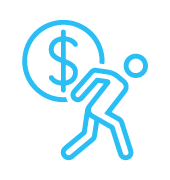
If your creditors agree to the program as it’s not binding on all of your creditors, all
of your credit cards and unsecured debt will be paid off within 5 years. All records
of the program and debts paid off through the program are erased from your credit
report 2 years after you complete the program.
If you’re struggling to pay back all of your debts, let’s discuss your debt relief options together. We can help reduce your debt load to a fraction of
what you owe, often between 30-80% off. A consumer proposal offers protection from your creditors, stopping them from taking legal action against
you, garnishing your wages, or even calling you. An LIT (Licensed Insolvency Trustee) administers it. We are not a Licensed Insolvency Trustee.
Wondering what kind of debts can be included in a consumer proposal? It covers most unsecured debts, such as credit card debt, bank loans, payday loans, tax debt, medical bills, and student loans (if it’s been 7 years since you were last a student). However, it doesn’t include secured debt, like mortgage or vehicle loans, and remains separate from these financial commitments. As long as you can keep up with your mortgage or car loan payments during the term of your consumer proposal, you can keep these assets. In many cases, a consumer proposal makes keeping up with secured debt payments a lot easier because the rest of your financial situation is under control.
To qualify for a consumer proposal, you must meet certain requirements before filing it. You’re
insolvent, meaning your debts are greater in value than your assets or you can no longer keep up with your debt payments. You have unmanageable debt that you can’t afford to pay back in its entirety; you can only afford to pay some of it back. Your unsecured debt is greater than $1,000 but less than $250,000 (excluding mortgage), and you’re a Canadian resident or have property in Canada. However, you don’t need property to qualify for a proposal.
A consumer proposal is an effective debt-relief strategy for many people who find themselves
unable to pay back their debts without losing any of their assets. If you fear you might have to
declare bankruptcy, a consumer proposal can solve your debt problems.
Here are three key advantages of a consumer proposal:
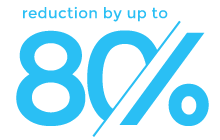
Typically, a consumer proposal can consolidate and reduce your debt load to a
fraction of what you owe, often between 30-80% off with no interest!
Imagine Mark who has $25,000 in credit card debt. If he files a consumer proposal and if it is accepted by his creditors, then he only has to repay 60% of his debt, or $15,000, over five years, fully open and with no interest.
Let’s compare Mark’s consumer proposal to other debt relief solutions:
Consumer proposal: $250.00 monthly payment, pay back 60% of the original amount owed
Credit counselling: $458.88 monthly payment, pay debt in full with no interest, plus a “fair share fee” equal to 10% of the debt
Debt consolidation loan: $734.67 monthly payment, pay debt in full at 12% interest, compounded annually
Do-it-yourself budgeting: $994.34 monthly payment, pay debt in full at 19% interest, compounded annually
But don’t just take our word for it. Here’s another real-life example of how a consumer proposal brought tremendous relief to our clients who are new parents struggling with debt. After reviewing all their options, they chose to file for a consumer proposal. They had their debt reduced from $95,000 to $25,200, a reduction of 74%. Of course, everyone’s situation is different, but typically a consumer proposal can reduce your debt load between 30% to 80%.
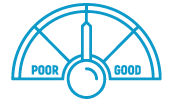
Now, you might be wondering if a consumer proposal will affect your credit. The answer is yes, it will temporarily affect your credit rating. Once your consumer proposal is filed, it will result in an R7/R9 rating on your credit report, the second and or the lowest rating that reporting agencies like TransUnion or Equifax use.
However, while a consumer proposal impacts your credit, it doesn’t last forever. Creditlift can advise you on the different ways you can rebuild your credit during and after your consumer proposal.
Overall, a consumer proposal can free up significant financial resources that could help you in the short and long term. It’s a chance to create cashflow breathing room in your budget, so you can focus on meeting your financial goals. At Creditlift, we’re here to help you make the best decision for your financial future.

Are you unsure if a consumer proposal is the right fit for you? It’s important to note that a Licensed Insolvency Trustee (LIT) is a neutral party and can file a consumer proposal on your behalf, with the goal of recovering as much as possible for your creditors.
At Creditlift, we understand that you deserve someone who will help and guide you through the process and have what’s in your best interest. That’s where our team of advisors come in. We’ll help you understand your financial situation and the different debt relief strategies available to you, from debt consolidation to proposals to bankruptcy and everything in between. We are here to help you make the best decision for your unique situation. We are not a Licensed Insolvency Trustee.
We understand that declaring bankruptcy can have long-lasting effects on your credit and job opportunities. That’s why we are here to help you
explore all of your options, from debt management programs to bankruptcy alternatives. We want to ensure that you have the full picture before
making a decision that could impact your life in unexpected ways.
Only when all other options have been exhausted. If you can’t afford to repay your debts within a reasonable time, selling your assets or obtaining a debt consolidation loan isn’t feasible, and you don’t qualify for a consumer proposal, then bankruptcy may be an option for you. However, we encourage you to consider all of your options before committing to bankruptcy. If you need extra assistance, don’t hesitate to contact us, and we’ll be happy to help.
When you declare bankruptcy, all collection activity on your unsecured debts will stop, and your creditors will accept new payment terms based on the court-approved bankruptcy agreement. However, secured debts aren’t included in bankruptcy. If you have equity in assets such as a vehicle or a home, your trustee will exercise their right to sell them to pay off your creditors. But don’t worry, you may be able to “buy back” your assets if you can afford to pay the difference.
Depending on your family size and makeup, 50% of all money you earn over a certain amount must be paid to your trustee each month, who will eventually disburse it to your creditors. Keep in mind that there are also certain assets and income that are exempt from bankruptcy, such as business tools and household effects up to a certain value.
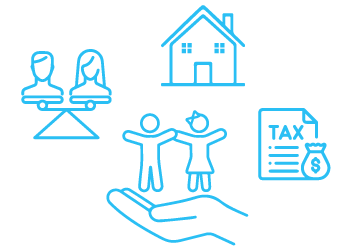
It’s important to note that bankruptcy won’t get rid of all your debts. Certain debts
are legally excluded from filing, such as money you owe for child support, spousal
support, court-ordered fines, debts that arise due to fraudulent activity,
government-issued student loans less than 7 years old (with some exceptions),
and certain government overpayments. We encourage you to review all the
alternatives to bankruptcy first before considering this aggressive approach to
debt relief.
CreditLift founders are considered experts in their field and have been interviewed by both local & national news networks related to debt and financial literacy.